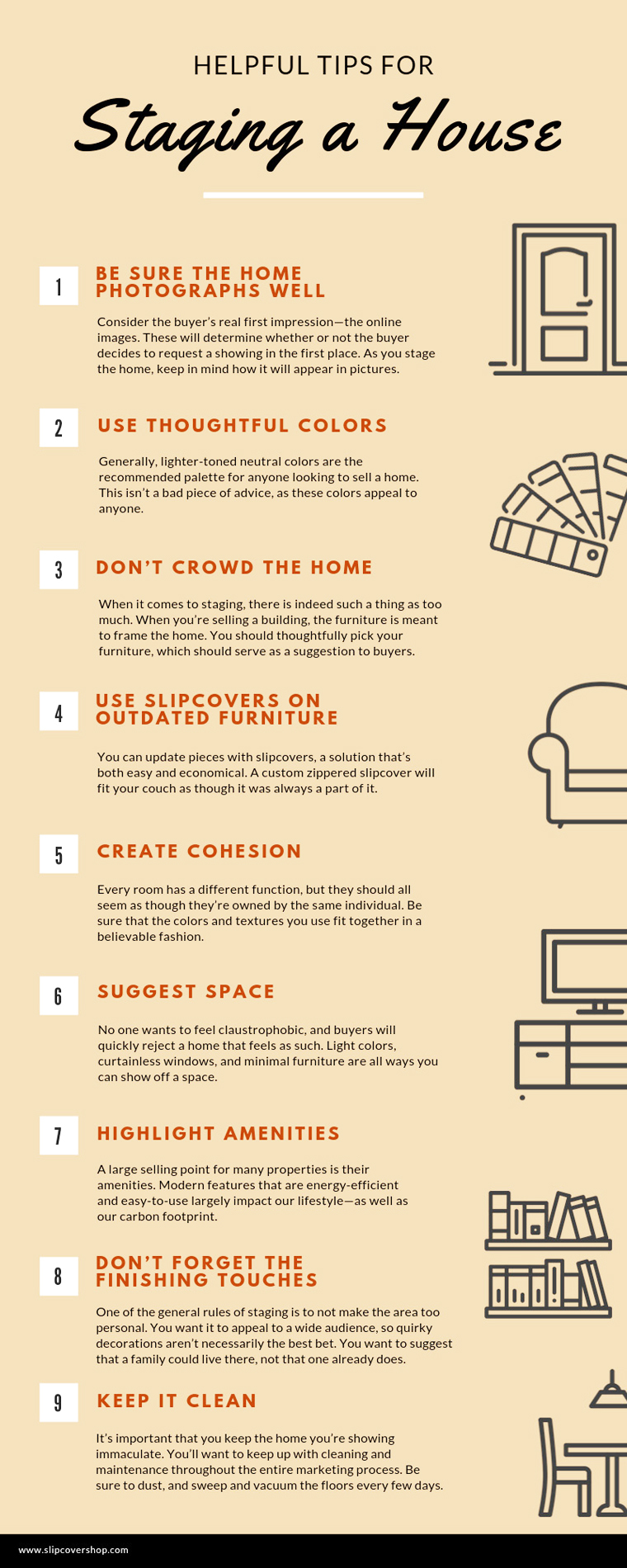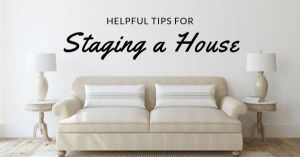Good staging is key to selling a house. Staging can generally go one of two ways, and you risk turning away potential buyers if you don’t know what you’re doing. Many buyers require the full picture in order to imagine themselves living in a home. Additionally, the right décor can enhance the best parts of a building. As such, you should educate yourself on the different ways to create the perfect scene. Below, you’ll find a comprehensive guide on how to stage a home.
Be Sure the Home Photographs Well
Many sellers stage homes with in-person showings in the forefront of their minds. This is certainly important, but you should also consider the buyer’s real first impression—the online images. These will determine whether or not they buyer decides to request a showing in the first place. As you stage the home, keep in mind how it will appear in pictures. While it’s easy to assume that everything will look just as good on camera as it does in real life, this isn’t always the case.
Use Thoughtful Colors
Generally, lighter-toned neutral colors are the recommended palette for anyone looking to sell a home. This isn’t a bad piece of advice, as these colors appeal to anyone. They allow all demographics of buyers to project their own design ideas onto the home as they imagine it in their minds. This isn’t a bad rule of thumb, but you still want your home to stand out. Buyers often see full lineups of homes bathed in beige, and they’re all likely to merge together in their minds after a while. A way to make your home stand out without being gaudy is to feature an accent wall. This will make an impact on the buyer and create an impression that will stick with them. As they filter through all the beige in their mind, the color you’ve chosen for the accent wall is certain to stand out. There’s a fine line between bland and tacky, and you’ll want to learn how to walk it.
Don’t Crowd the Home
When it comes to staging, there is indeed such a thing as too much. When you’re selling a building, the furniture is meant to frame the home. You should thoughtfully pick your furniture, which should serve as a suggestion to buyers. You’re trying to show how the home can look when tastefully dressed—but remember that the décor isn’t what they’re buying. You want to impress potential buyers, but the actual building is ultimately what should make an impact. Make the furniture an accessory, and be sure it doesn’t camouflage the actual structure of the home. Ultimately, you’ll have to consider what the home actually needs. Don’t add in objects that are too niche or that the average homebuyer wouldn’t own. Couches, coffee tables, and wall hangings are items you can expect to find in the average person’s home. Mobile bar carts and vanities are potentially unnecessary items that may eat up too much space.
Use Slipcovers on Outdated Furniture
There comes a time when some furniture is not what it once was, to put it lightly. However, you might not want to invest a large amount of money into something you’re not actually selling. Fortunately, there’s no actual need to replace this worn furniture. Instead, you can update pieces with slipcovers, a solution that’s both easy and economical. A custom zippered slipcover will fit your couch as though it was always a part of it. You can also use the same furniture for several showings by having a few different colored covers to match any setup.
Create Cohesion
Ideally, one room will naturally transition into the next. You don’t want to throw off buyers by leading them into an area with too drastic a scene change. Every room has a different function, but they should all seem as though they’re owned by the same individual. Be sure that the colors and textures you use fit together in a believable fashion.
Suggest Space
Almost everyone is looking for a home with space. Square footage, after all, is one of the first things we look for in a listing. This point circles back to the concept of not overcrowding a house—remember, no one wants to feel claustrophobic, and buyers will quickly reject a home that feels as such. Light colors, curtainless windows, and minimal furniture are all ways you can show off a space. Some homeowners are willing to sacrifice square footage so long as they can still feel as though they have room to move around.
Highlight Amenities
A large selling point for many properties is their amenities. Modern features that are energy-efficient and easy-to-use largely impact our lifestyle—as well as our carbon footprint. Don’t cover up these features; instead, find ways to highlight them. While these amenities aren’t additions, they’re still an important aspect in the staging process.
Don’t Forget the Finishing Touches
Choosing furniture for the staging process generally isn’t the most difficult part. You’re essentially selecting items that everyone has in their homes. When it comes to the finishing touches, however, things can become more difficult. One of the general rules of staging is to not make the area too personal. You want it to appeal to a wide audience, so quirky decorations aren’t necessarily the best bet. You want to suggest that a family could live there, not that one already does. A lack of decorations, however, can make the area seem more sterile and therefore less accessible. Choose simple decorations such as candles and clocks to add a bit of livability to the home. We recommend adding a few wall hangings, though perhaps not portraits. Abstract paintings will generally appeal to everyone, and you can add a few mirrors to create the illusion of more space and dimension.
Keep it Clean
It’s important that you keep the home you’re showing immaculate. You’ll want to keep up with cleaning and maintenance throughout the entire marketing process. Be sure to dust, and sweep and vacuum the floors every few days. Even a small bit of dust on a mantel can make an area seem stale to particular buyers. If no one is using the home while you’re selling, this maintenance should be fairly simple.


